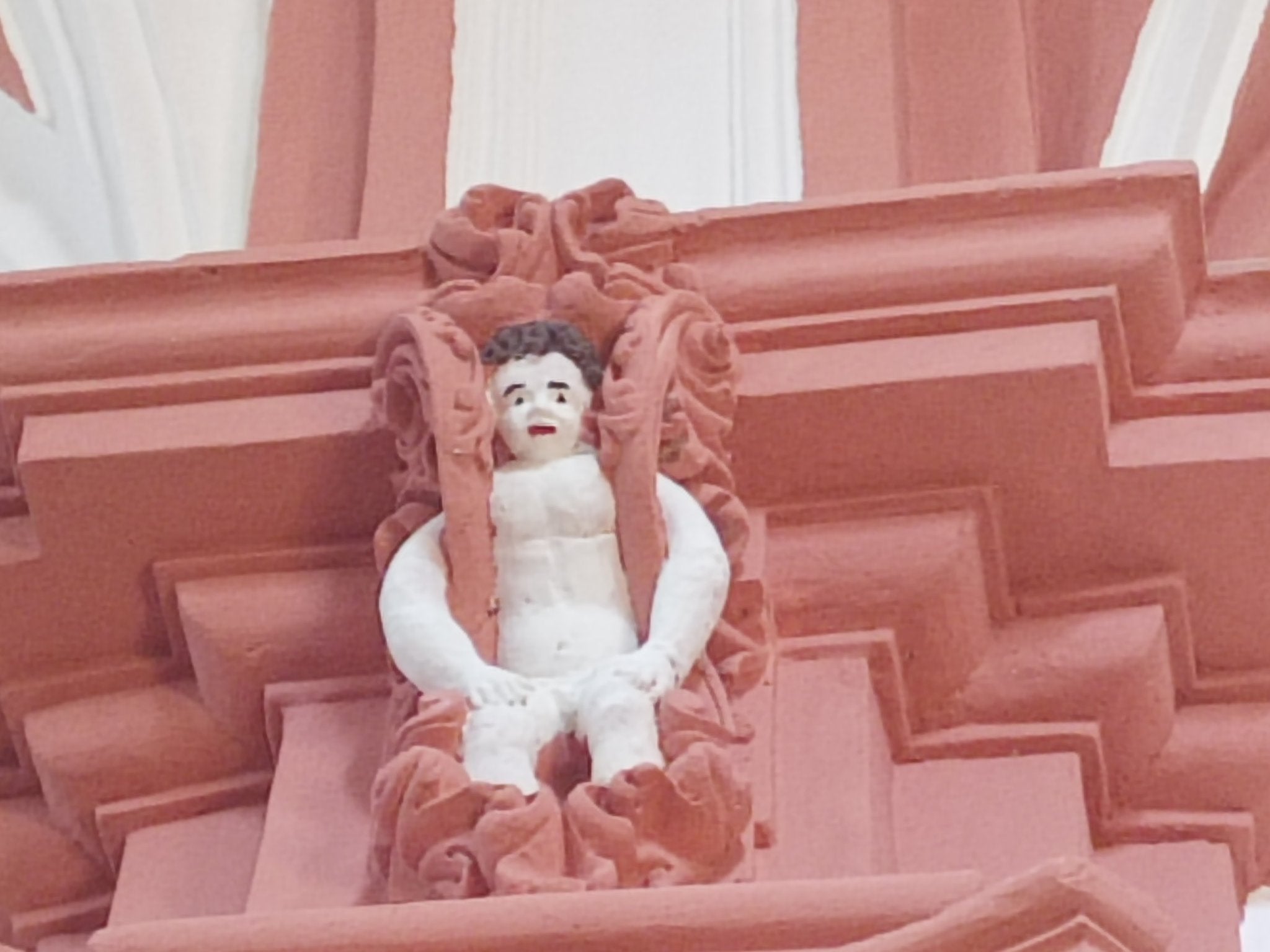Heritage groups outraged by botched Spanish church renovations with ‘caricature-like’ cherub
Experts call 18th century church makeover ‘an assault on heritage’

Your support helps us to tell the story
From reproductive rights to climate change to Big Tech, The Independent is on the ground when the story is developing. Whether it's investigating the financials of Elon Musk's pro-Trump PAC or producing our latest documentary, 'The A Word', which shines a light on the American women fighting for reproductive rights, we know how important it is to parse out the facts from the messaging.
At such a critical moment in US history, we need reporters on the ground. Your donation allows us to keep sending journalists to speak to both sides of the story.
The Independent is trusted by Americans across the entire political spectrum. And unlike many other quality news outlets, we choose not to lock Americans out of our reporting and analysis with paywalls. We believe quality journalism should be available to everyone, paid for by those who can afford it.
Your support makes all the difference.An historic 18th century church in the northeastern Spanish city of Soria has undergone a controversial makeover that has left locals and expert restorers outraged.
The Ermita de Nuestra Señora del Mirón, originally built in 1725, recently received a makeover that altered the church’s interior. The startled expression now evident on the face of a cherub has left many comparing the job to the notorious “Ecce Homo/Monkey Christ” restoration fiasco from 12 years ago.
Soria Patrimonio, a heritage preservation group, shared before-and-after photos on X, formerly Twitter, of the once-white nave now painted in dusky pink stripes.
Another photo showed close up shots of the cherubim who, after the makeover, appear to have startled expressions.
“What have they done to the Ermita de Nuestra Señora del Mirón?” the group wrote in their post.
“It’s a listed building, but even if it weren’t, any work on a monument such as this had to be subject to minimum guarantees.”
The group told El Confidencial online newspaper that the repainting has left the church’s cherubim looking “caricature-like”.
Cherubim are angelic beings often depicted in religious art and literature as chubby, innocent-looking children with wings. In various religious traditions, particularly in Judaism, Christianity, and Islam, cherubim are considered a high-ranking order of angels.
“The repainting of a church such as this one falls outside the good intervention practices that apply to buildings with heritage value,” it said.
The El Confidencial article also drew comparisons with the Ecce Homo painting fiasco, asking “Another Ecce Homo, but with Cherubs?”, referring to the infamous restoration of a fresco of Jesus Christ called Ecce Homo in Borja, a small town in Spain, that went viral for all the wrong reasons.
An elderly parishioner and amateur artist, Cecilia Giménez, attempted to restore the fresco, created by Spanish artist Elías García Martínez in the early 20th century. But the effort went awry, giving the fresco a radically altered and amateurish appearance. The botched restoration was dubbed “Monkey Christ” online due to the distorted features of the figure.
Spain’s Professional Association of Restorers and Conservators (Acre) said the work in Soria should have been carried out by professionals and routinely monitored by restorers and conservators.
“We’re not talking about a failed restoration here; we’re talking about an assault on heritage,” Francisco Manuel Espejo, president of Spain’s Professional Association of Restorers and Conservators, said in a statement of the failed restoration.
“There needs to be multidisciplinary teams to avoid these kinds of efforts,” Acre said in a separate statement written in Spanish.
“There needs to be weekly inspections to keep track of the works and to prevent invasive and disrespectful alterations.”
The association said it had asked the heritage department of the regional government of Castilla y León for an explanation.
A spokesperson for the diocese of Osma-Soria, which is responsible for the church, told The Guardian: “All I can tell you is that the works on the church were carried out with the required permissions and that some people like the end result and some don’t.”
Spain is no stranger to botched restoration projects. In 2019, a 16th century sculpture of Saint George was renovated in a way that was criticised as cartoonish. Eventually the sculpture was restored back to its original state by experts.
At that time, Fernando Carrera, spokesman for Spain’s art conservation-restoration association, told AFP the incident was just “the tip of the iceberg of so many cases that don’t appear in the press”.
“It’s constant,” he added.
Join our commenting forum
Join thought-provoking conversations, follow other Independent readers and see their replies
Comments